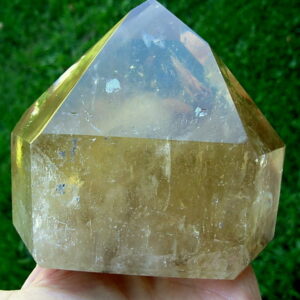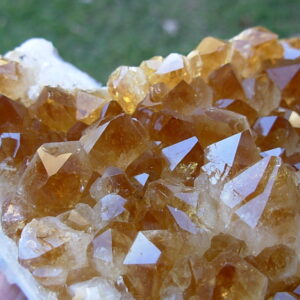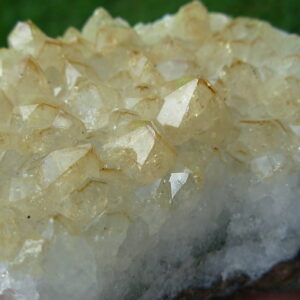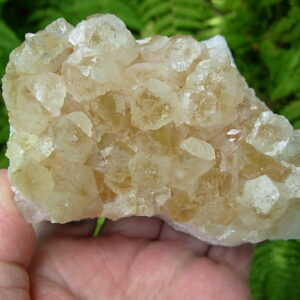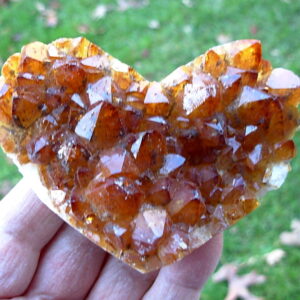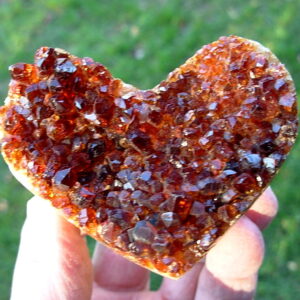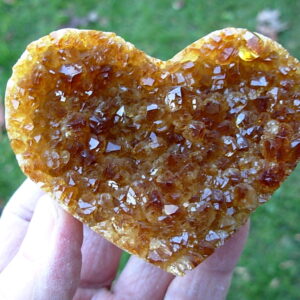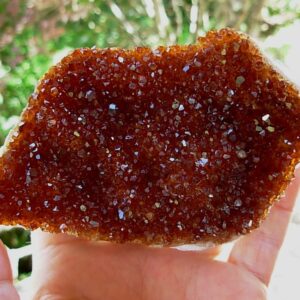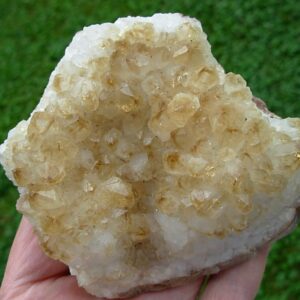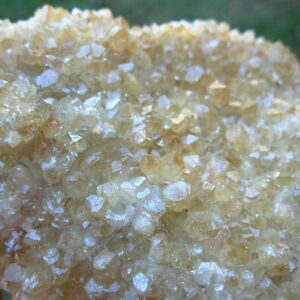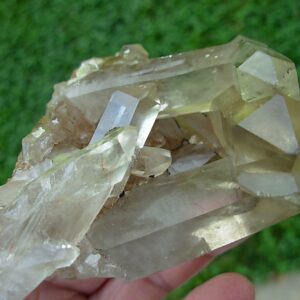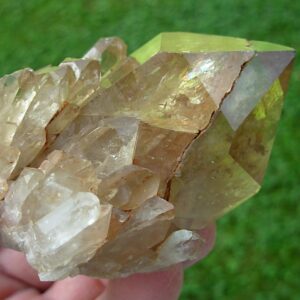Citrine
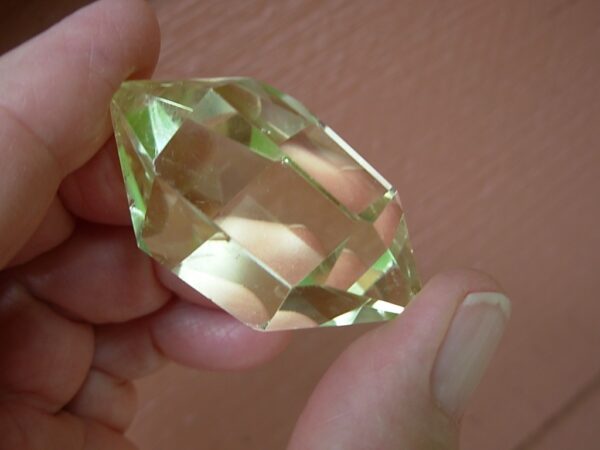
Citrine is a variety of quartz whose color ranges from a pale yellow to brown. Natural citrines are rare; most commercial citrines are heat-treated amethyst. Citrine contains traces of Fe3+ and is rarely found naturally. The name is derived from Latin citrina which means "yellow". Citrine crystals can form together with amethyst or smoky quartz to form a bi-colored quartz called ametrine.
Natural citrine is pale yellow to orange, much lighter than the heat-treated material which is dark orange-brown to reddish-brown. All of the heat-treated material has a red tint, while natural citrine may or may not have a light tint. Some amethyst deposits have been found where the amethyst was changed naturally by high temperatures to beautiful orange to brown citrine.
Most citrine comes from Brazil, but almost all of the Brazilian material is heat-treated amethyst (a very dark orange-red). Natural citrine is found in Brazil and can also be found in the Ural Mountains of Russia, in Dauphine, France, and in Madagascar. In Europe, the boom on these yellow to reddish crystal quartzes didn't begin until, in the 1930s, when agate cutters from Idar-Oberstein sent large quantities of citrine back home, along with amethyst and agate, from Brazil and Uruguay. The inexpensive low grade amethyst is heated at high temperatures to produce the popular orange, reddish and sherry colored citrine. Darker colors are considered more valuable, including the medium golden orange and dark sherry-colors.
-
Beautiful Large Natural Citrine Crystal Point from Brazil
$435.00 Add to cart -
Beautiful Natural Citrine Plate from Brazil 11
$79.00 Read more -
Beautiful Natural Citrine Plate from Brazil 12
$84.00 Read more -
Beautiful Natural Citrine Plate from Brazil 14
$24.00 Add to cart -
Beautiful Natural Citrine Plate from Brazil 15
$36.00 Add to cart -
Citrine Heart Shaped Plate from Brazil 7
$96.00 Add to cart -
Citrine Heart Shaped Plate from Brazil 8
$102.00 Add to cart -
Citrine Heart Shaped Plate from Brazil 9
$108.00 Add to cart -
Citrine Plate from Brazil
$79.00 Add to cart -
Natural Citrine Crystal Plate from Brazil
$97.00 Add to cart -
Natural Light Yellow Citrine Plate with Small Crystals from Brazil 10
$29.00 Add to cart -
Natural Smoky Citrine Cluster from Brazil
$126.00 Read more -
Natural Smoky Citrine Cluster from Lwena, Katanga, D.R. Congo
$109.00 Add to cart
information from:
The Mineral Gallery http://mineral.galleries.com/
The Mineral and Gemstone Kingdom http://www.minerals.net/
International Colored Gemstone Association http://gemstone.org/

